Technologies
Pixel Fold: All the Buzz on Google’s Foldable Phone
One of Google’s most anticipated phones could be revealed in May.
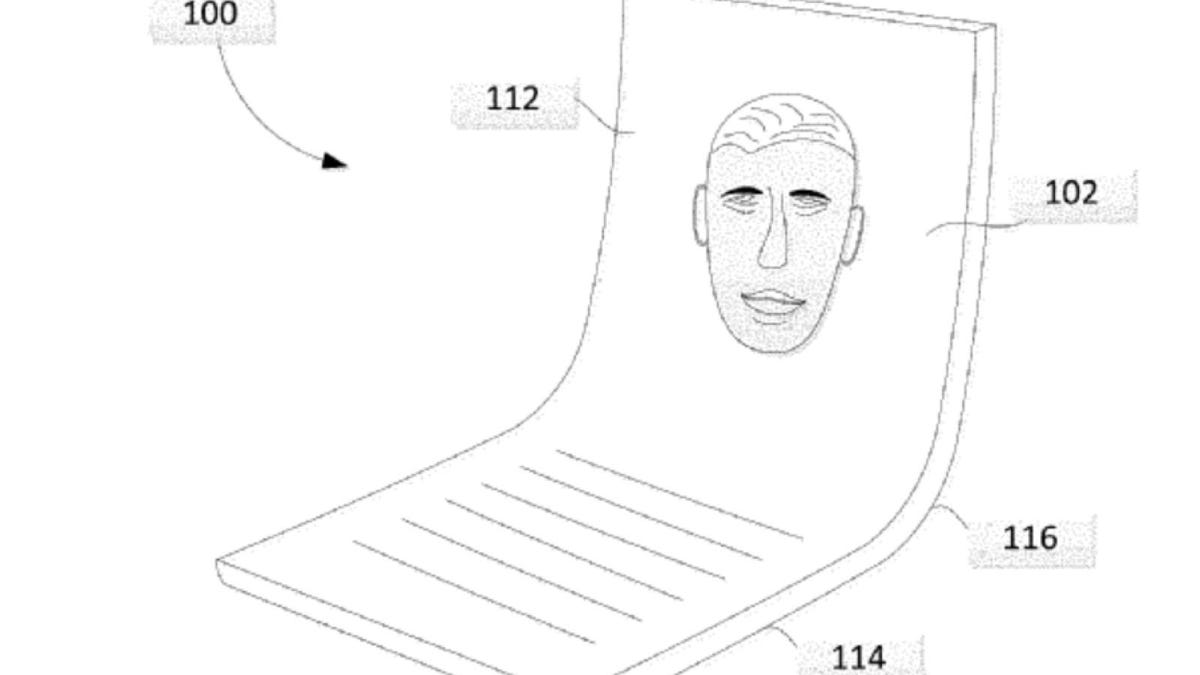
Google could be the next major tech company to throw its hat into the foldable ring. There have been rumors fluttering for a while that a bendy Pixel phone might see the light of day, especially given the company’s focus on hardware in recent years.
The rumored Google Pixel Fold is expected to go on sale in June, according to March reports from 9to5Google and WinFuture. It’s possible the company introduces the Pixel Fold at its annual Google I/O event, scheduled this year for May 10.
So far the company has kept mum on the possibility of a foldable phone. But that hasn’t stopped Pixel fans from hoping. Keep in mind that Google confirmed that it had been prototyping the folding technology back in 2019. Prior to that, it filed a patent application for a foldable device.
Google isn’t the only company that’s reportedly joining the foldable phone bandwagon. It appears to be an open secret that Apple’s gearing up to do the same, though that may not show up till 2025. (Read CNET’s coverage about a potential iPhone Flip.) Samsung meanwhile, seems to be going full steam ahead with its foldable phones. The South Korean company launched its fourth generation of foldable phones, the Galaxy Z Fold 4 and Galaxy Z Flip 4, at its Unpacked event in August. Chinese phone makers like Huawei and Oppo have also continued to release their own foldables in the form of the Mate X3 and the Find N2 Flip.
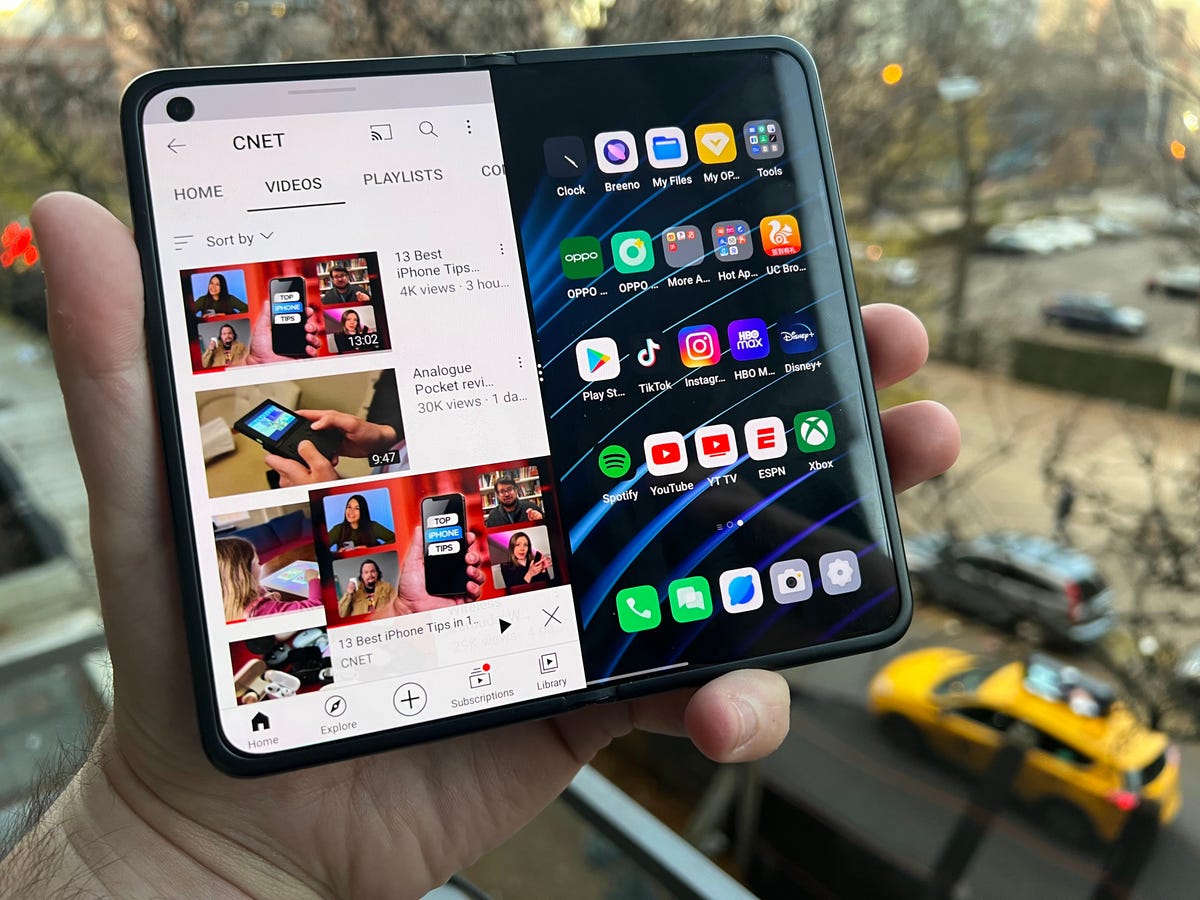

Even when the phone’s opened, it’s hard to find a crease on the Oppo Find N.
Eli Blumenthal/CNETPixel Fold design: More Oppo Find N than Galaxy Z Fold 4
Animations found in Android 12L, Google’s software designed specifically for large-screen devices such as tablets and foldable phones, have offered hints at the possible appearance of the Pixel Fold. Based on that, Google’s foldable phone will take the form of a book-style foldable with two screens.
The Google foldable was initially rumored to resemble the taller and leaner design of Samsung’s Galaxy Z Fold 3, which has an approximate aspect ratio of 22.5:18. But according to 9to5Google and other media outlets, the opened-up Pixel Fold is more likely to resemble the squarish shape of Oppo’s foldable phone, the Find N. When closed, it’s believed to have an aspect ratio closer to 18:9. If that’s true, it would mean that, like the Find N, the Pixel Fold could be more natural to use as a regular phone when closed. According to a December report by HowISolve, the cover display will measure 5.79 inches, while the inner display will measure 7.69 inches.
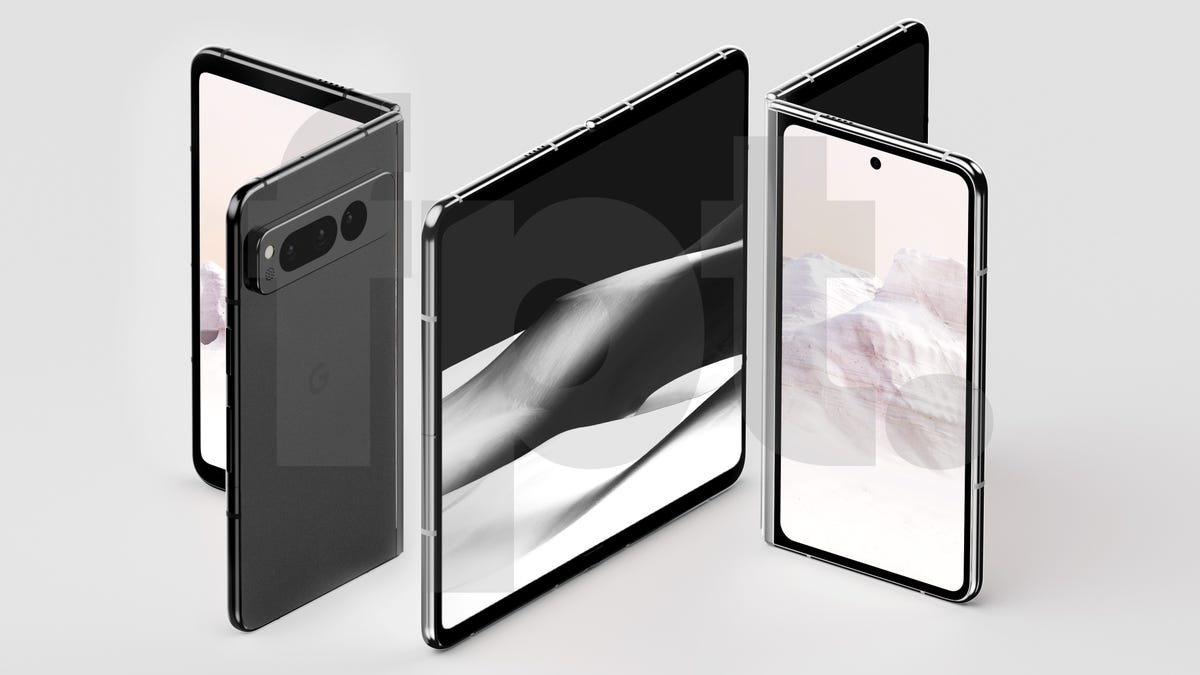

Google Pixel Fold Renders Showing Different Fold Angles
Front Page TechPixel Fold design: Just 2 colors
Renders based on images of a Google Pixel Fold were published online in November by Front Page Tech. The phone renders show two colors, one model in obsidian (black) and one in chalk (white). However more recent reports point to color options in «carbon,» likely a shade of gray or black, and «porcelain.»
Pixel Fold camera: Camera module may be step down from Pixel 6
There haven’t been many rumors about the Pixel Fold’s camera, but there’s room for some speculation, courtesy of 9to5Google. The website is reporting that the Pixel Fold will have two front-facing 8-megapixel lenses, one presumably on the cover and one for the interiors, as well as a 12-megapixel rear camera. The main sensor is expected to be a step down from the Pixel 6 series, since it’s rumored to rely on Sony’s IMX363 sensor, used in the Pixel 3 in 2018, as opposed to Samsung’s top-of-the-line GN1 sensor, from the main 50-megapixel camera of the Pixel 6 series.
If I had to guess, I’d expect the logic for this potential decision to hinge on the size of the GN1 sensor, which is one of the larger camera sensors on the market. That means it’ll be tough for a foldable phone to carry it without increasing the overall heft of an already-hefty foldable device. Another rumor points to the Pixel Fold having a 50-megapixel main camera along with two 12-megapixel cameras and an 8-megapixel one.
Read more: Google Pixel 6A: The Best Android Phone Under $500
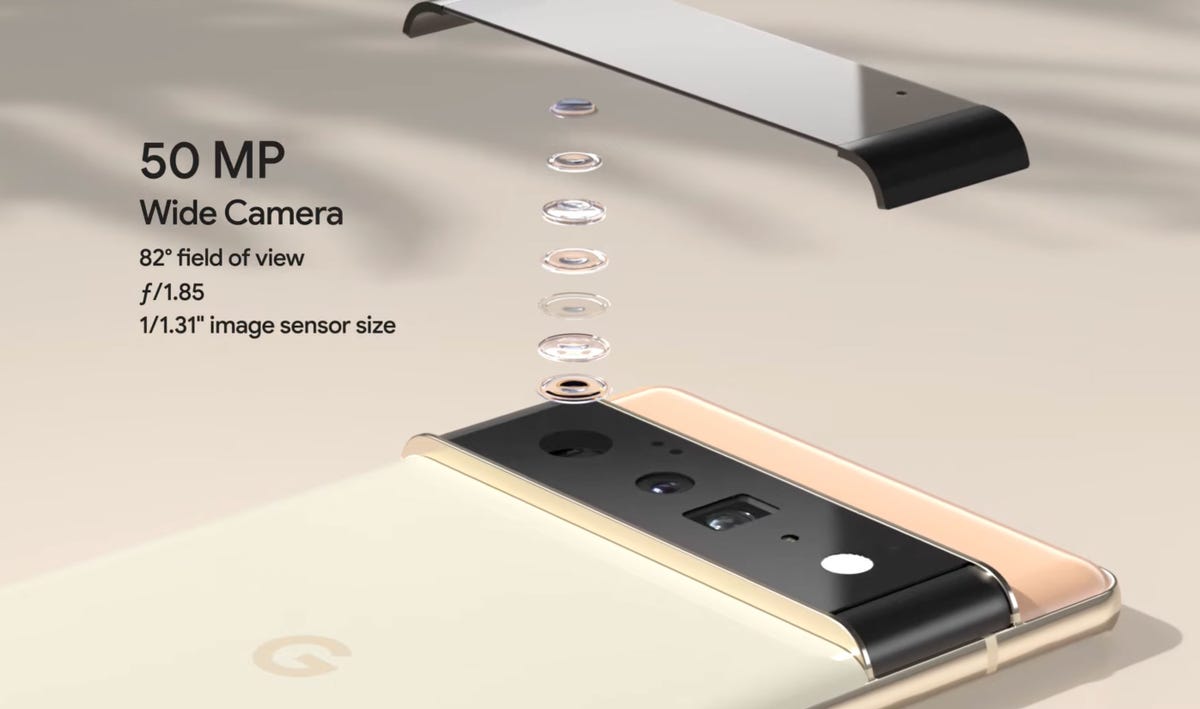

Google put a relatively large image sensor into the main camera of both its $599 Pixel 6 and $899 Pixel 6 Pro.
Google; Screenshot by Stephen Shankland/CNETPixel Fold price: $1,400 to $1,800
There’s no telling for certain what a phone will cost until launch day — if that happens at all. But according to a report by 9to5Google citing an unnamed source, the Pixel Fold will be priced below the $1,800 (£1,320 or AU$2,500) mark. Another report spotted by BGR in March seems to corroborate that notion, putting the price as low as $1,399, which is less than Samsung’s $1,800 Galaxy Z Fold 4. Those rumors seem to make sense as they appear to align with Google’s strategy of undercutting its competitors in terms of price.
Read More: Google Pixel 7 vs. Apple iPhone 14 vs. Samsung Galaxy S22: The $200 Difference
Pixel Fold processor: Tensor
Considering Google went to the complex and costly trouble of developing its own system-on-chip technology, it’s all but certain the Pixel Fold will run on the Tensor chipset, which debuted on the Pixel 6 series.
Technologies
Give the Gift of Great Sound With Sennheiser Headphones at a 60% Black Friday Discount
The Sennheiser Momentum 4 headphones are now down to a record low price of $179 this Black Friday.
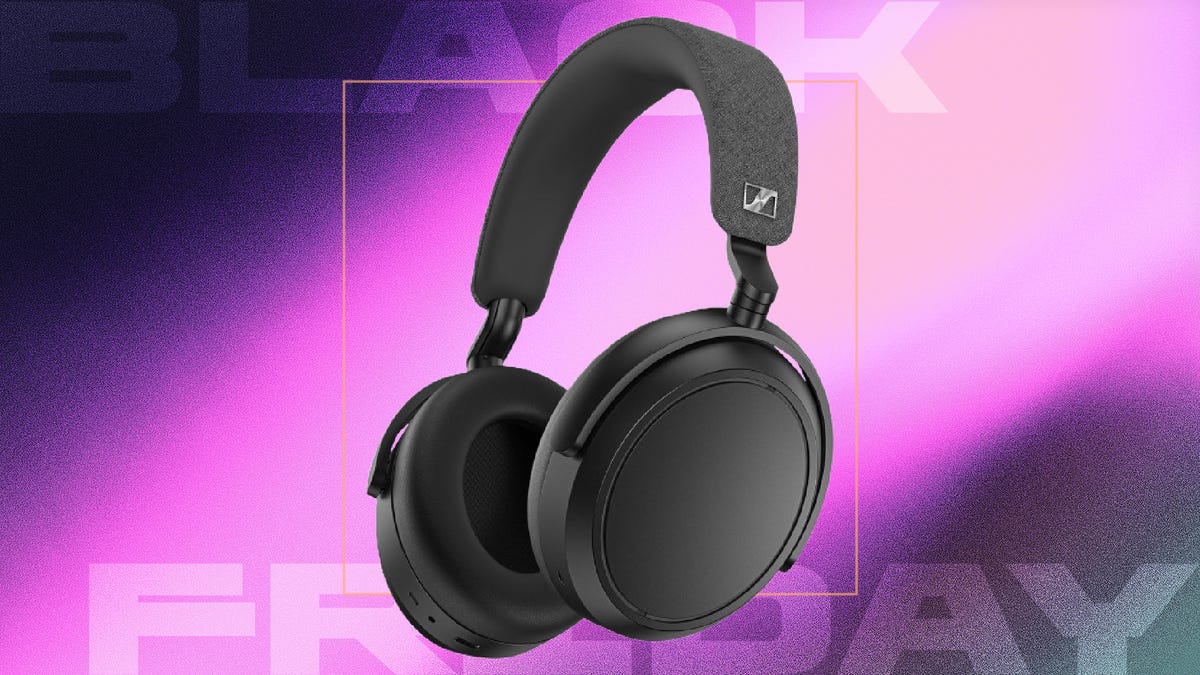
Spending this Black Friday shopping for a holiday gift for an audiophile? With tons of items on sale, there are plenty to chose from. Sennheiser is behind some of the best wireless headphones you can buy, but its headphones can be prohibitively costly.
But for two days only, Woot is running a Black Friday deal that brings the Sennheiser Momentum 4 headphones down to $179 from the original $450 price. The Sennheiser Momentum 4 headphones are for audiophiles who want great quality and comfort. You have to be quick, as this deal ends on Nov. 30, or sooner if supplies run out.
Sennheiser Signature Sound gives you rich, balanced audio, and the companion Smart Control app lets you fine-tune the sound to your liking. Adaptive noise cancellation keeps outside distractions at bay, making these headphones great for work, commuting or just zoning out at home. The battery lasts up to 60 hours at moderate volume, and the voice-calling quality is solid, so you can rely on them for everyday use.
Hey, did you know? CNET Deals texts are free, easy and save you money.
If this style of headphones isn’t your cup of tea, then maybe a pair of the best wireless earbuds will be better suited to your needs. If you’re shopping on a budget, check out our roundups of the best gifts under $100, $50 and $25 to see more great gift-giving ideas.
HEADPHONE DEALS OF THE WEEK
-
$248 (save $152)
-
$170 (save $181)
-
$199 (save $150)
Why this deal matters
This deal surely won’t last. Sennheiser has made a name for itself as one of the best in the audio business, and that’s clear with the Momentum 4 wireless headphones. They offer adaptive noise cancellation, a Bluetooth connection and up to 60 hours of playback. When it comes to comfort and quality, it doesn’t get much better, especially with a discount like this.
Join Our Daily Deals Text Group!
Get hand-picked deals from CNET shopping experts straight to your phone.
By signing up, you confirm you are 16+ and agree to receive recurring marketing messages at the phone number provided. Consent is not a condition of purchase. Reply STOP to unsubscribe. Msg & data rates may apply. View our Privacy Policy and Terms of Use.
Technologies
Samsung’s Galaxy Watch 8 Is Now Just $250 in Multiple Black Friday Sales
The Samsung Galaxy Watch 8 is an even better value with this $100 discount.
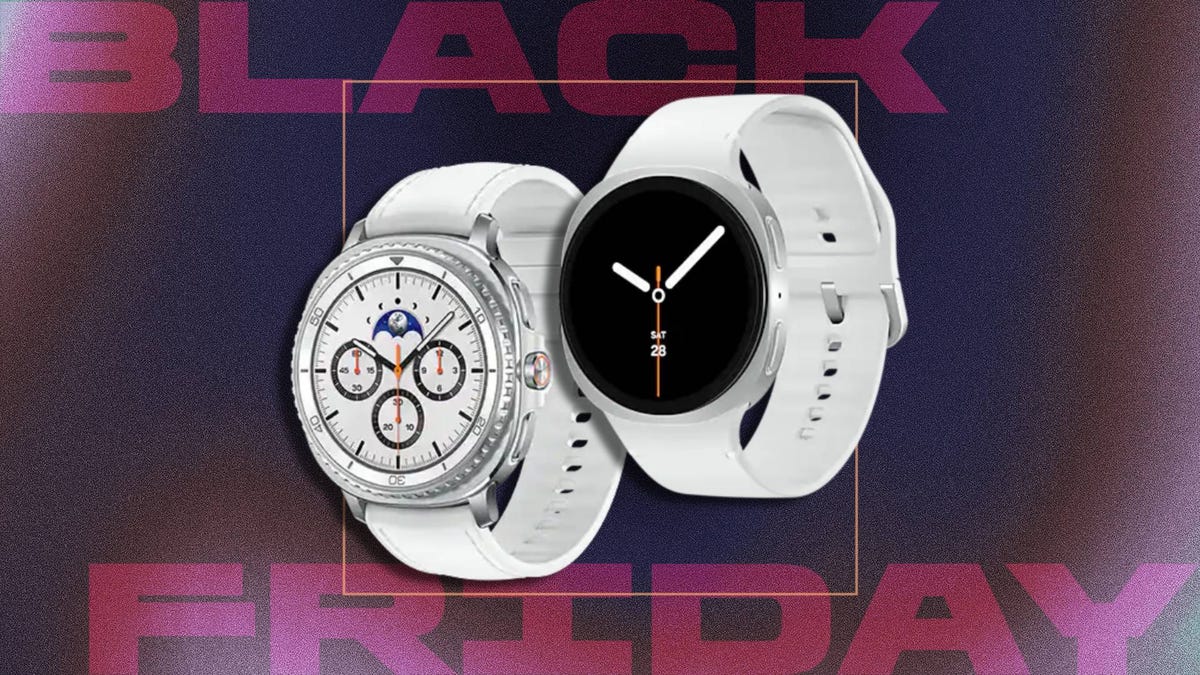
The holiday season is here, and while your fitness goals might not be at the front of your mind right now, January is just around the corner. That means resolutions are upon us, so what better time than now to pick up a new smartwatch? You can get your hands on a new Samsung Galaxy Watch 8 while it’s available for a huge $100 off for Black Friday.
Amazon and Best Buy are both selling the Galaxy Watch 8 at the same $250 price. We can’t promise either deal will be around for long.
Samsung’s latest smartwatch packs serious hardware upgrades over it predecessor. It has a vibrant 46mm AMOLED display that shines up to 3,000 nits, along with 2GB of RAM, 64GB of storage, built-in GPS and advanced fitness tools, including sleep coaching and vascular load monitoring. It’s waterproof up to 50 meters and lasts up to 30 hours on a single charge.
CNET expert Vanessa Hand Orellana praised its refined design, detailed health insights and Gemini AI support, noting that it «has nearly every feature I could hope for.» Just remember, some tools work best when paired with the Samsung Galaxy phone.
SMARTWATCH DEALS OF THE WEEK
-
$339 (save $60)
-
$280 (save $70)
-
$300 (save $50)
-
$150 (save $100)
-
$49 (save $30)
Why this deal matters
The Samsung Galaxy Watch 8 packs serious upgrades for the price. With advanced fitness tools, sleep coaching and daily energy tracking, it’s one of the most feature‑rich smartwatches this year. The $250 price represents a new low for the model and includes a 90-day warranty. But with limited stock, it’s a deal worth grabbing quickly.
Join Our Daily Deals Text Group!
Get hand-picked deals from CNET shopping experts straight to your phone.
By signing up, you confirm you are 16+ and agree to receive recurring marketing messages at the phone number provided. Consent is not a condition of purchase. Reply STOP to unsubscribe. Msg & data rates may apply. View our Privacy Policy and Terms of Use.
Technologies
The Black Friday Gaming Deals Are Here. Shop Now and Save Big on PlayStation, Xbox and Alienware
-

 Technologies3 года ago
Technologies3 года agoTech Companies Need to Be Held Accountable for Security, Experts Say
-

 Technologies3 года ago
Technologies3 года agoBest Handheld Game Console in 2023
-

 Technologies3 года ago
Technologies3 года agoTighten Up Your VR Game With the Best Head Straps for Quest 2
-

 Technologies4 года ago
Technologies4 года agoBlack Friday 2021: The best deals on TVs, headphones, kitchenware, and more
-

 Technologies4 года ago
Technologies4 года agoVerum, Wickr and Threema: next generation secured messengers
-

 Technologies4 года ago
Technologies4 года agoGoogle to require vaccinations as Silicon Valley rethinks return-to-office policies
-

 Technologies4 года ago
Technologies4 года agoOlivia Harlan Dekker for Verum Messenger
-

 Technologies4 года ago
Technologies4 года agoiPhone 13 event: How to watch Apple’s big announcement tomorrow
